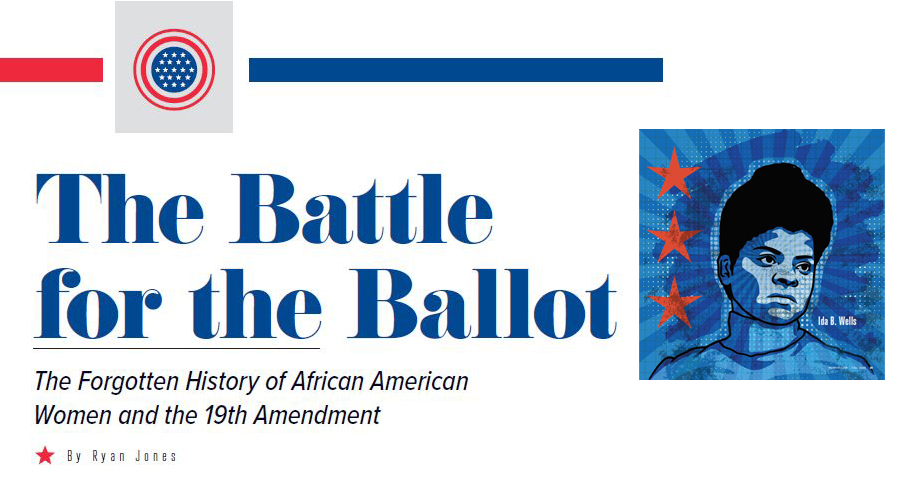
MOST INDIVIDUALS READING this are probably well aware that this year marks the 100th anniversary of the ratification of the 19th Amendment, which gave women the right to vote.
Many readers may also know about Tennessee's crucial role in the process, with the state serving as the 36th and final state needed to make women's suffrage the law of the land.
But what is not more widely known is the role African American women played in this battle for the vote. Race was a major factor in history largely omitting the work of these women in the culture's memory of the suffrage movement, even though the dedication, achievements and tireless efforts of Black suffragists greatly shaped the fight for women's rights.
Black women, who were eager and willing to join white women to push for their right to vote, were often relegated to the fringes of the suffrage movement and quite frequently were denied the simple act of having a voice in the discussion, even by suffragists themselves.
As we recognize and celebrate the centennial anniversary of the 19th Amendment, much of the forgotten history surrounding its origins and ratification is beginning to resurface. Stories about the tireless efforts of these African American women are finally starting to find new outlets and platforms across the country. In fact, an "Equality Trailblazers" suffrage monument is planned for the area directly behind the University of Memphis School of Law later this year. The large-scale monument will honor 13 individuals, among them several African American women with ties to Memphis who were vitally important to the suffrage movement in Ida B. Wells and Mary Church Terrell, both of whom also suffered racist treatment at the hands of white women in the larger suffrage organizations and movement.
As we begin to look back at this historic celebration that will be commemorated on the law school's back steps, it is an opportune time to also help tell the stories of some of the forgotten figures that were instrumental to the success of the suffrage movement and its ability to propel women forward in society.
THE TRADITIONAL NARRATIVE
The most commonly accepted history of the women's suffrage movement centers around Susan B. Anthony and Elizabeth Cady Stanton — two white women who played influential roles in the 19th century struggle for women's suffrage — and usually begins with the 1848 women's rights convention held in Seneca Falls, N.Y.
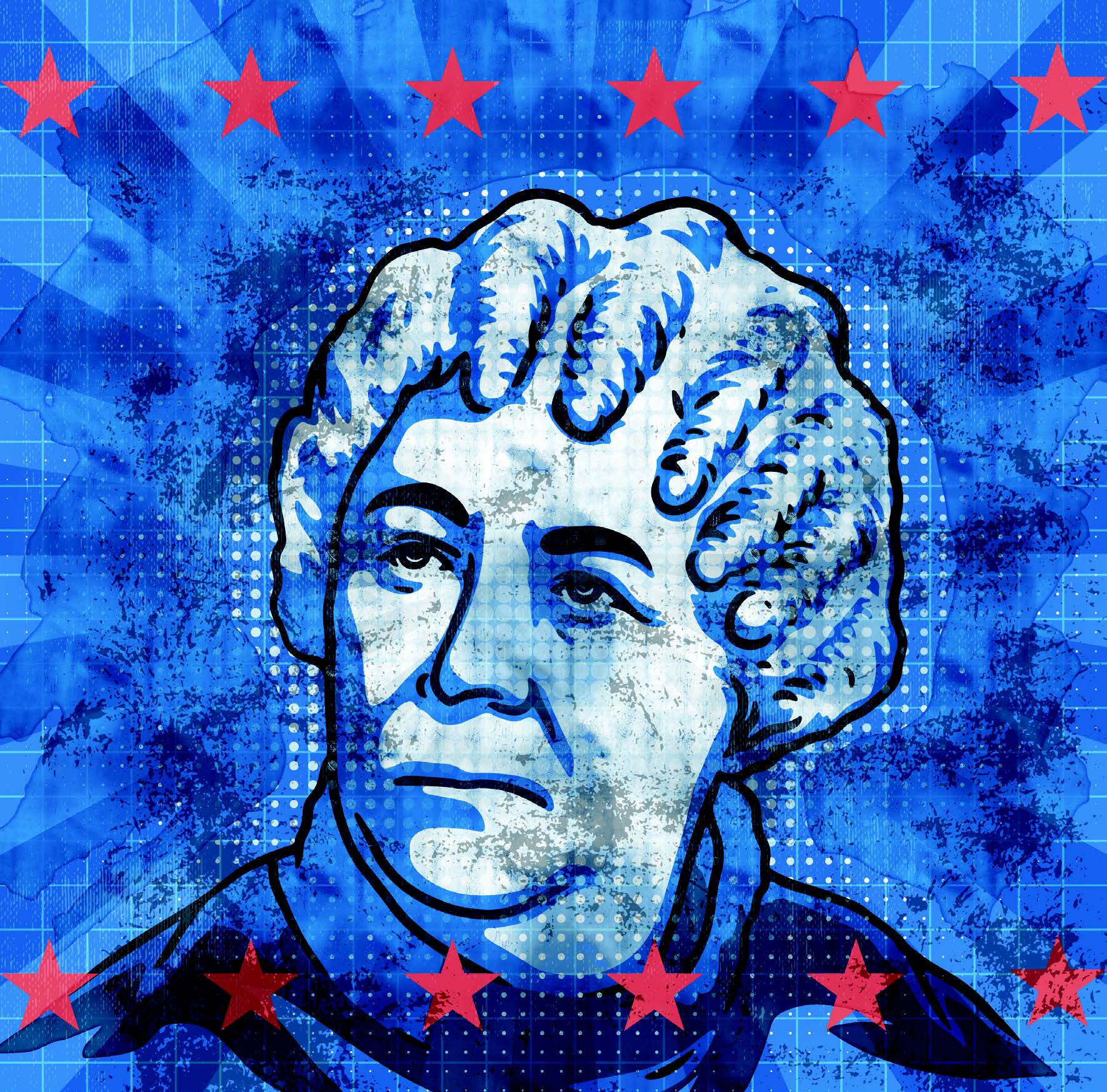 For the next 50 years after that Seneca Falls convention, we have been taught that
under the leadership of Anthony and Stanton, and many other women's rights pioneers, suffragists
banded together to hold conventions, circulate petitions and lobby Congress to pass
a constitutional amendment to enfranchise women. And while this is true, it does not
tell the whole story. As the 20th century progressed, leadership of the suffrage movement
was set by two national organizations', the National American Woman Suffrage Association (NAWSA)
and the National Woman's Party (NWP). The organizations' memberships numbered in the
millions, and the two groups' combined efforts are largely credited in history as
being the reason the 19th Amendment was finally ratified. The victory of the movement,
with leaders such as Anthony, Stanton, Alice Paul and Carrie Chapman Catt, is widely
considered to be the most significant achievement of women in the Progressive Era
and was the single largest extension of democratic voting rights in our nation's history,
peacefully achieved through democratic means.
For the next 50 years after that Seneca Falls convention, we have been taught that
under the leadership of Anthony and Stanton, and many other women's rights pioneers, suffragists
banded together to hold conventions, circulate petitions and lobby Congress to pass
a constitutional amendment to enfranchise women. And while this is true, it does not
tell the whole story. As the 20th century progressed, leadership of the suffrage movement
was set by two national organizations', the National American Woman Suffrage Association (NAWSA)
and the National Woman's Party (NWP). The organizations' memberships numbered in the
millions, and the two groups' combined efforts are largely credited in history as
being the reason the 19th Amendment was finally ratified. The victory of the movement,
with leaders such as Anthony, Stanton, Alice Paul and Carrie Chapman Catt, is widely
considered to be the most significant achievement of women in the Progressive Era
and was the single largest extension of democratic voting rights in our nation's history,
peacefully achieved through democratic means.
"The traditional narrative does often leave out large groups of women who don't fit into the white, middle-class story of women's rights," Earnestine Jenkins, professor of art and researcher of African American history at the UofM, said in a recent USA Today article. "You have to be honest about the racism in the movement and the extent they kept women of color out of the movement ... You have to look for those hidden histories, because otherwise you are not going to get the complete story."
COMMON CAUSE, AT FIRST
The entire movement had a good deal more common ground early on than where it eventually ended up.
From the earliest years of the suffrage movement, Black women worked side by side with white suffragists and abolitionists. In the turmoil of the Civil War, as the country tore itself apart over Black rights, the strong ties and parallels between the situations of slaves and that of women became evident.
The U.S. women's rights movement was closely allied with the antislavery movement at the time and, even before the Civil War, Black and white abolitionists and suffragists joined together in "common cause." In the years before the war, usually referred to as the Antebellum period, a small coalition of formerly enslaved and free Black women, including Sojourner Truth, Harriet Tubman, Maria W. Stewart, Mary Ann Shadd Cary and others, were active in women's rights circles. They were even joined in their advocacy of suffrage and women's rights by well-known Black men of the time, including Frederick Douglass and Robert Purvis. At that time, they were even working alongside and in collaboration with white abolitionists and white women's rights activists like Susan B. Anthony and Elizabeth Cady Stanton.
Throughout the 1850s and 60s, following the 1848 Seneca Falls convention, many prominent free Black women, abolitionists and suffragists attended, spoke and assumed leadership positions at multiple women's rights gatherings. But after the Civil War, the arguments for women's suffrage became entangled with the widespread debates over the rights of former slaves and the meaning of "citizenship."
It became increasingly clear post-Civil War that Black and white woman in the U.S. had different views of why it was essential to have the right to vote. Black women, many of whom were still in the South, were seeking the right to the ballot for themselves and Black men in their lives, as a way of empowering post-Civil War Black communities that were still being harassed by acts of racial terror which became widespread after emancipation. White women, on the other hand, were seeking the vote as a symbol of equality with the white men in society.
The differences and rifts between the groups came to a head in the period leading up to the 15th Amendment, which seemingly gave Black men the right to vote by barring states from denying them the ability to do so.
(Cont. below "More Hidden Heroes")
MORE HIDDEN HEROES
Sojourner Truth
She was the first known African American suffragist. An illiterate, itinerant preacher and reformer from New York, she was an emancipated slave who supported herself with menial jobs. She traveled throughout the eastern United States and attended woman's rights conventions as an outspoken proponent for women's rights and women's suffrage. Her overwhelming
presence, personal magnetism and unique oratorical style captivated audiences and won even skeptics to the cause. Her famous "Ain't I a Woman?" speech at the Ohio Woman's Convention in 1851 secured her reputation as a famous champion of women's rights causes, eventually leading her to be received by President Lincoln himself at the White House in 1864.Mary Ann Shadd Cary
A veteran suffragist from Washington, D. C., Cary worked as a journalist, teacher, lawyer and politician. She was perhaps the first African American suffragist to form a suffrage Association. During the 1850s, she was a leader and spokesperson among the African American refugees who fled to Canada after the passage of the Fugitive Slave Act in 1850. In 1853, she founded the Provincial Freeman, a newspaper dedicated to the interests of Blacks in Canada. She was acclaimed as "the first colored woman on the American continent to establish and edit a weekly newspaper." She called for an amendment to strike the word "male" from the Constitution. In 1871, Cary unsuccessfully tried to vote in D.C., but she and 63 other women prevailed upon officials to sign affidavits attesting that women had tried to vote. In 1876, Cary wrote the National Woman Suffrage Association on behalf of 94 Black women requesting that their names be enrolled in the July 4th autograph book as signers of the Woman's Declaration of Sentiments, which demanded the immediate enfranchisement of American women.
Frances E.W. Harper
Harper was a Philadelphia lecturer and organizer of African American women. In 1854, she delivered a successful antislavery lecture in New Bedford, Mass., "Education and the Elevation of the Colored Race," that launched her career. She was a founding member of the American Woman Suffrage Association, and in 1873, after returning from a tour of freedman's communities in the reconstructed states of the South, she delivered the closing speech at the AWSA convention in New York. She called for equal rights and equal access to education for Black women, clearly defining race as a factor in the denial of women's rights, and was an organizer of the National Association of Colored Women and became its vice president.
Maria Stewart
The very first known woman to speak in public about politics to a mixed audience of men, women, whites and Blacks. Stewart was an African American woman who had a short career as a public speaker in Boston. She was a teacher, journalist, lecturer, abolitionist and women's rights activist. She was also the first African American woman to make public lectures about women's rights and make a public anti-slavery speech. Her speeches and lecture style are said to have heavily influenced famed orator Sojourner Truth.
The fact that voting rights were given to Black men but not to women seemed to enrage many suffragists, including Susan B. Anthony.
"I will cut off this right arm of mine before I ever work or demand the ballot for the Negro and not the woman," Anthony said at the time.
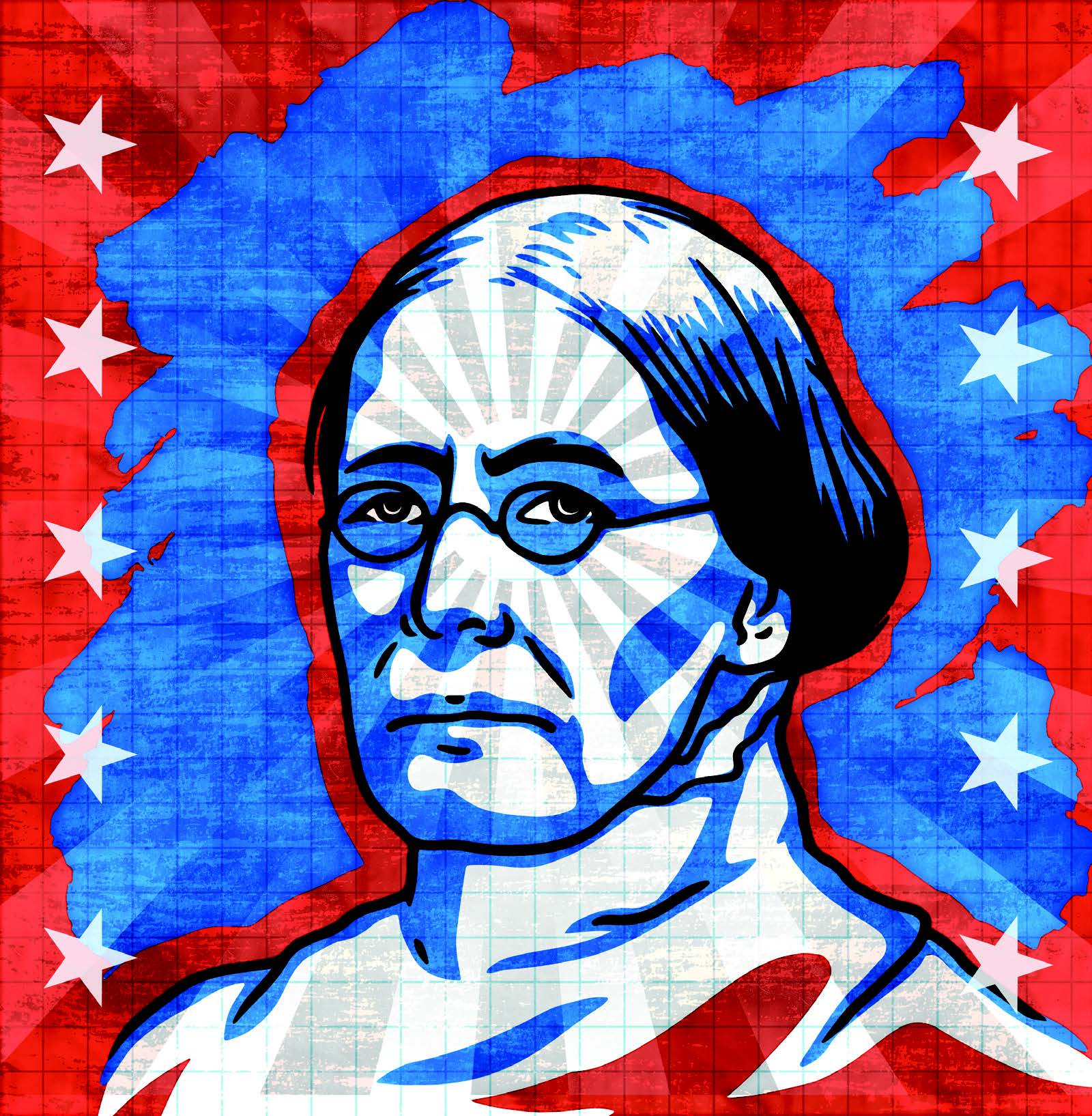 The divisive attitudes of Anthony and some fellow white women suffragists were echoed
in a way by white men in power at the time who feared any push for a law that would
give not only white women, but Black women, a place at the polls.
The divisive attitudes of Anthony and some fellow white women suffragists were echoed
in a way by white men in power at the time who feared any push for a law that would
give not only white women, but Black women, a place at the polls.
This meant a new reality for many suffragists on both sides. "They realized that there
really wasn't as much common ground between African American suffragists and white,
middle-class suffragists as there might have been in a society that wasn't so polarized
in questions of race," wrote Susan Ware in her book Why They Marched: Untold Stories
of the
Women Who Fought for the Right to Vote.
"There came a time that the motivation for the involvement for African Americans was broader because they were just coming out of the postslavery environment," said Hon. Bernice B. Donald, a judge in the U.S. District Court of Appeals for the Sixth Circuit and one of the most prominent African American female trailblazers of our time. "They were working and fighting for their entire communities and trying to get racial dignity and stem terroristic measures, all the while hoping for a partnership with the white suffrage movement. But with the rise of white supremacy in the South and the need to broaden the southern coalition for suffragists, African American women realized the coalition and partnership was frayed and fractured."
Rather than join African American women in fighting for universal suffrage (the goal that the entire movement had supported prior to the Civil War), many white suffragists urged support for a federal amendment without regard for how it might pertain to Black women. By the 1910s, a great deal of white suffragists came to believe that focusing on white women getting the right to vote was the only way they could get the 19th Amendment through Congress.
In her 1917 book Woman Suffrage by Federal Constitutional Amendment, NAWSA president Carrie Chapman Catt openly acknowledged that Black women in the South would likely be disenfranchised in precisely the same ways that Black men had been because the federal amendment "will be subject to whatever restrictions may be imposed by state constitutions." She noted that, in Southern states on the whole, white women outnumbered Black women, thus, "If the South really wants white supremacy, it will urge the enfranchisement of women."
NEW ORGANIZATIONS AND POWERFUL WOMEN
Despite apparent progress made by the 15th Amendment, Jim Crow laws in the South negated and undermined the new rights won by Black men.
Those laws meant that they were ordered to use separate drinking fountains, swear on separate Bibles in court, sit in segregated seats on buses and in separate areas in restaurants, among other things. States enacted literacy tests and exorbitant poll taxes which prevented many Black men from even casting their ballots.
Black women knew that they were not only fighting for the improvement of their own
conditions, but those of their entire race and community. This meant that some still
viewed themselves as allies with white women suffragists organizations, as they knew
that
having a vote would ultimately empower them against discrimination, even if it meant working
alongside suffragists that at times espoused racist views.
It was around this time that new groups formed on both sides.
The split in the suffrage movement over the 15th Amendment prompted Stanton and Anthony to break ties with the American Equal Rights Association (AERA), which was formed by former abolitionists and women's rights advocates that endorsed both women's and Black men's right to vote, and form the National Woman Suffrage Association (NWSA). Their new organization promoted universal suffrage, insisting that Black men should not receive the vote before white women.
It was because of views such as that, as well as the racist stances taken by those like Stanton and Anthony, a good deal of disillusionment and anger was expressed by longtime allies such as Frederick Douglass and notably, Frances E.W. Harper, the famous poet, abolitionist and writer, who was also one of the first African American women to be published in the U.S. It even caused Harper to throw her unlikely support behind the 15th Amendment and join the new American Woman Suffrage Association (AWSA), which supported both Black suffrage and women's suffrage with a state-by-state approach to securing women's rights.
"As much as white women need the ballot, colored women need it more," Harper said in remarks at the 1873 AWSA convention. "As many whites, including some white female suffragists, publicly denounced Black male suffrage, Black women incorporated Black male suffrage as an important component of their suffrage goals."
Harper went on to inspire many through her prose and poetry, elevating issues of racism, feminism and class. "The ballot in the hands of woman means power added to influence," she said at the Chicago World's Fair in 1893. "How well she will use that power I cannot foretell."
Still, African American women persevered in a struggle that was seemingly separate from the white suffragist cause, and yet in some ways the same. Many became members of both women's suffrage groups — the NWSA and the AWSA — in order to keep their causes active and elevated amongst their allies.
In the latter years of the 1890s and into the early 1900s, many of these Black women
began to form their own local and regional women's suffrage clubs in their regional
communities. A notable example was the DuBois Club — an African American women's club
founded by Margaret Hawkins, Augusta Chissell and Estelle Young in Baltimore in 1907
— which brought together women of color in support of change. The group started as
an effort to focus on literature, the arts and famous African Americans, but soon
began to participate in political activities and address the suffrage issue. They
slowly built up their reputation and influence among the community by establishing
social groups and working with churches to lead efforts of change and reform. Before
too long, Young started a dedicated suffrage organization called the Progressive Women's Suffrage
Club, with Hawkins assuming the role of vice president and Chissell that of secretary.
They joined a nationwide collaboration of Black women, with many of them organizing under the National Association of Colored Women (NACW), which was the largest federation of Black women's clubs in the country.
Sally Wagner, editor of The Women's Suffrage Movement anthology, called this collective effort amongst Black women's suffrage clubs "both brilliant and politically savvy."
Following the organization's motto of "Lifting as We Climb" as its guiding principle, the group provided Black women a national platform to advocate for women's suffrage and women's rights causes, and elected Memphian Mary Church Terrell as its first president in 1912.
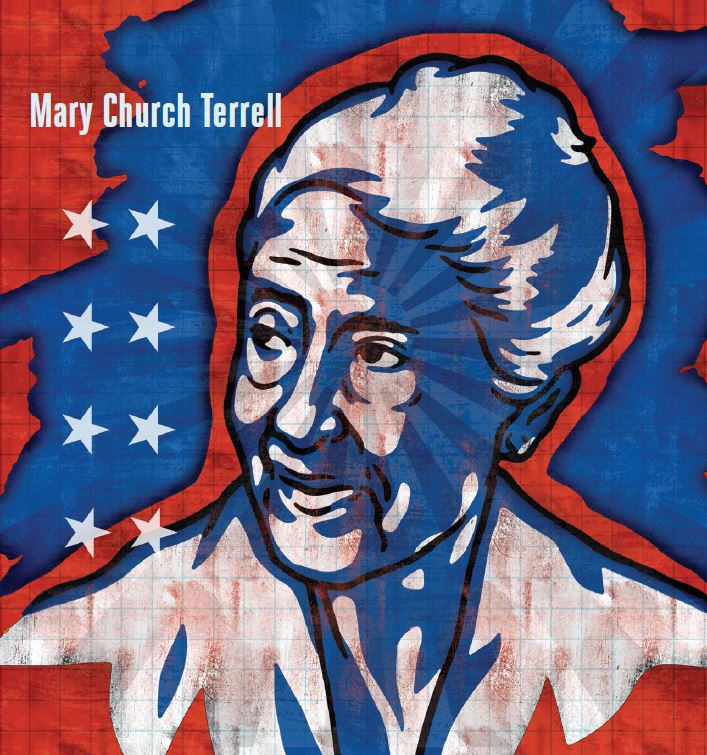 Terrell was one of the prime figures among Black women suffragists and clubwomen of
the 20th century. A writer, educator, suffragist and civil rights activist, she was
the daughter of Memphis' own Robert Church, the South's first Black millionaire. She
was one of the first African American women to earn a college degree, obtaining both her
undergraduate and master's degree from Oberlin College. After college, she moved to
Washington, D.C., to teach and soon became the first Black woman to earn a position on
the board of education there.
Terrell was one of the prime figures among Black women suffragists and clubwomen of
the 20th century. A writer, educator, suffragist and civil rights activist, she was
the daughter of Memphis' own Robert Church, the South's first Black millionaire. She
was one of the first African American women to earn a college degree, obtaining both her
undergraduate and master's degree from Oberlin College. After college, she moved to
Washington, D.C., to teach and soon became the first Black woman to earn a position on
the board of education there.
Terrell quickly became a leader in the Black community's social and civic life in D.C. and soon became a member of the NAWSA, becoming the president of the new NACW group soon after its merger.
She was instrumental in building a national, cohesive movement out of the Black women's
clubs for reform in the Black community,
and greatly enhanced the impact and formidable political significance of these Black women's
clubs themselves.
She traveled nationwide, with published articles and notable quotes in both the Black
and white media from East to West Coasts
on the topics of "the race problem" and the suffrage movement.
Terrell, in her recorded speeches in the NAWSA archives, told white women that "to exclude Black women from voting because of race was like excluding white women because of gender." And in speeches to suffrage organizations, she repeatedly defended against the charges of corruption among Black men, reminding white women of the racial barriers that kept many former slaves powerless.
But speeches and rhetoric were not going to be enough to ensure the successful cooperation of the suffrage movement's upper middleclass white leaders. It was their view that if suffrage was to be won, Black women could not be vocal supporters or the focus of the issues.
Many Black women refused to step aside or be silenced, however. One of them was Ida B. Wells, and she was louder and more outspoken than most.
Another important figure with ties to Memphis and the Mid-South, Wells was a journalist,
newspaper editor, suffragist and civil rights leader. She was an African American
woman born into slavery in Holly Springs, Miss., who went on to attend Rust College
and eventually moved to Memphis, where she worked as a teacher and began her journalism
career. She started off her crusade for equality and justice with the filing of a lawsuit
against a train car company in Memphis for unfair treatment. She had been thrown off
a firstclass train, despite having a ticket. Although she won the case on the local
level, the ruling was eventually overturned in federal court. After the lynching of
one of her friends, Wells turned her attention to white mob violence. She became skeptical
about the reasons Black men were lynched and set out to investigate several cases,
publishing her findings in a pamphlet and wrote several columns in local newspapers.
Her exposé about an 1892 lynching enraged locals, who burned her press and drove her
from Memphis. After a few months, the threats became so bad she was forced to move, eventually
ending up in Chicago.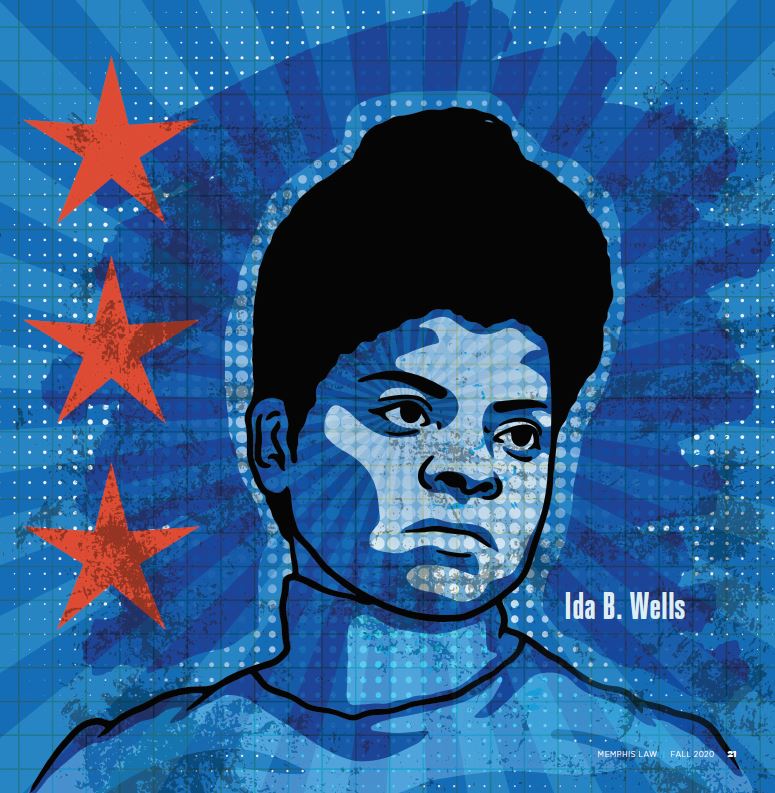
Her dedication to the cause brought about one of the more memorable visuals of the movement in 1913 at the National Woman's Party suffrage parade, the first major national event held for the suffrage movement, in Washington, D.C., on the eve of President Woodrow Wilson's inauguration. Wells, who founded the Alpha Suffrage Club for African American Women in Chicago (the first such club for Black women in Illinois), wrote letters to NWP founder Alice Paul asking how her club members and fellow Black women could march and participate. Paul eventually agreed to accommodate them but, acquiescing to the white racism typified in the movement and to assuage the feelings of Southern white women in the movement, told them Black suffragists would have to march at the rear of the parade rather than with the white Chicago delegation in the parade.
Wells refused the terms and as the all-white Chicago delegation passed, she emerged from the crowd and entered the front of the line among the white Chicago women and proceeded to march alongside them and their delegation.
"Either I go with you or not at all," said Wells. "I am not taking this stand because I personally wish for the recognition. I am doing it for the future benefit of my whole race."
She went on to co-found the National Association of Colored Women and the National Association for the Advancement of Colored People (NAACP).
AN INCOMPLETE VICTORY
American suffragist Angelina Grimke Weld once optimistically asserted that "injustices will end between the sexes when woman gains the ballot." But, sadly, the struggle continued for African Americans, particularly Black women.
After over 40 years of contentious debate and constant effort on the part of suffragists, Congress approved the 19th Amendment in 1919. A year later, enough states had still not voted for ratification of the law, however. By the summer of 1920, 35 of the 48 states at the time had voted for ratification, but eight states had rejected it. Another three had refused to even weigh in.
It all came down to two remaining states: North Carolina and Tennessee. Only one of
them needed to vote in favor of suffrage in order to make it the law of the land. Tennessee
was that state, becoming the essential 36th state needed to ratify the 19th Amendment. But
that may not have happened without yet another often-overlooked African American woman.
Juno Frankie Pierce was one of several leaders involved in the Volunteer State's ratification
of the Amendment.
In an unlikely and surprising instance of cooperation, especially in the Jim Crow
South, Black women's clubs in Tennessee often
worked with white women's clubs on various social issues. These connections helped
foster an alliance in Nashville on suffrage as the debate around ratification was
looming.
The chair of the Tennessee Equal Suffrage League, a white woman named Catherine Kenny, was impressed with Frankie Pierce throughout their campaign to get out the vote in the 1919 elections and invited her to speak at the inaugural meeting of the newly formed League of Women Voters of Tennessee in May 1920.
According to Elaine Weiss, author of the suffrage movement book "The Woman's Hour," Pierce's address (as a Black woman) to several hundred white women in the Tennessee Capitol was a "taboo-breaking experiment in political cooperation."
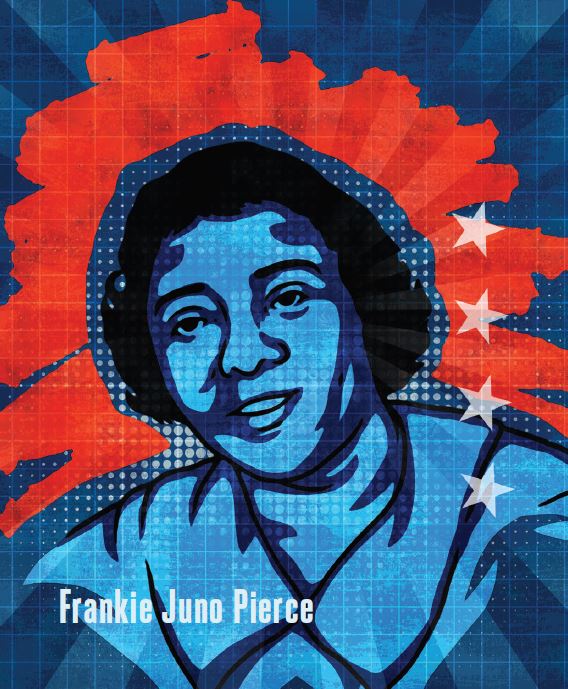 In her address, Pierce asked, "What will the Negro woman do with the vote? We will
stand by the white women. We are optimistic because we have faith in the best white
women of the country, of Nashville. We are going to make you proud of us, because
we are going to help you help us and yourselves." She continued, "We are interested
in the same moral uplift of the community in which we live as you are ... We are asking
only one thing — a square deal."
In her address, Pierce asked, "What will the Negro woman do with the vote? We will
stand by the white women. We are optimistic because we have faith in the best white
women of the country, of Nashville. We are going to make you proud of us, because
we are going to help you help us and yourselves." She continued, "We are interested
in the same moral uplift of the community in which we live as you are ... We are asking
only one thing — a square deal."
Sadly, even though the amendment's passage in Tennessee was due in part to the work of Tennessee suffragists like Frankie Pierce and the rare offer of cooperation with white women suffragists in the state, African American women were left behind in the wake of "success." Weiss believes that the white suffragists in Tennessee did not repay Black women in the South and "did not do enough to make sure that the Black women in the South wouldn't be robbed of the vote, and they were."
The reality was, though women finally secured the right to vote nationwide, Black women would be regularly turned away from the ballot box until the passage of the Voting Rights Act several decades later. The act outlawed tools of disenfranchisement that targeted African Americans, such as literacy tests and poll taxes, and the dream of African American suffragists would finally come to fruition.
MAKING USE OF THE PAST FOR A BETTER FUTURE
Understanding the racial and socioeconomic class dynamics surrounding the ratification of the 19th Amendment, and this historic anniversary of it, does not lessen the significance of the amendment itself or the activism, on both sides, that led to its ratification.
But the occasion does give us the opportunity to rethink our history and learn lessons from it for our future. Fully realizing gender equality, voter fairness and racial justice all happen by understanding the past, while also giving credit to the often-forgotten heroes who helped win it.
In her book, Vanguard: How Black Women Broke Barriers, Won the Vote, and Insisted on Equality for All, Martha Jones states that "African American women are the first — and continue to be the most committed — thinkers and activists toward a human rights vision; toward a vision of women's rights and its interest in all humans."
"They have always rejected racism and sexism and set a high bar that has been difficult for us as a nation to reach," she concludes.
The hard work done by Black women suffragists left a mark that is still felt in politics today, with higher percentages of eligible Black women voters casting ballots in election after election and more and more African American women working toward change on a nationally elected level.
The often-forgotten mobilization efforts and dedication of Black women, including the suffragists noted here, was vital to the success of everything from bodily autonomy to fair housing to the right to vote. These Black women organized and stood alongside white women and Black men to obtain freedoms that for too long had been denied them and taken for granted by those in power.
Their legacy today is reflected by Black women continuing to organize to support education, promote civic involvement and push back against racism. They continue to work to assure the right to vote continues to be upheld in the face of closing polling stations, gerrymandering, long wait times at polling booths and voter registration purging.
"I think that we still have a problem in this country of not being able to look at our total history," said Judge Bernice Donald. "And I think it's that kind of thing that caused the contributions of these African American women to be ignored, where we don't really talk about it."
"I think to the extent that you can deny a race its positive history, it promotes a larger frame of ignorance," she notes. "Until we become so liberated that we can look at our total history — the good, the bad and the ugly — we will continue to have problems and continue to promote an agenda that overlooks the contributions of all."
Black women, such as the often overlooked heroes we've noted in this article, have always been a powerful force in America. As we celebrate the 100th anniversary of the ratification of the 19th Amendment, it is a timely moment to reflect on all they've done while never giving up in the face of adversity.

